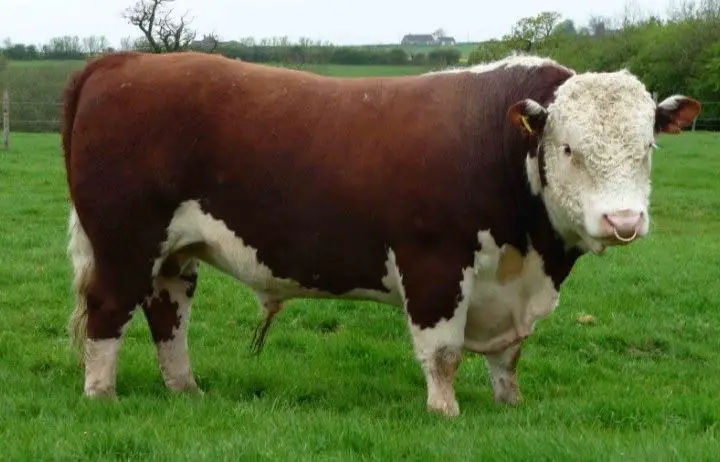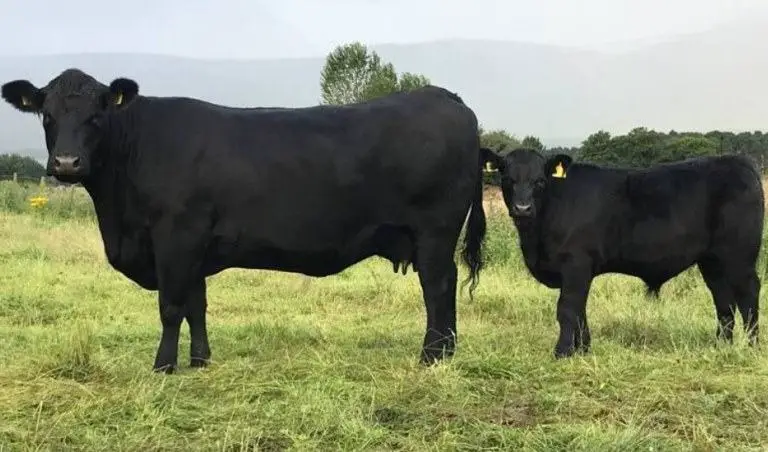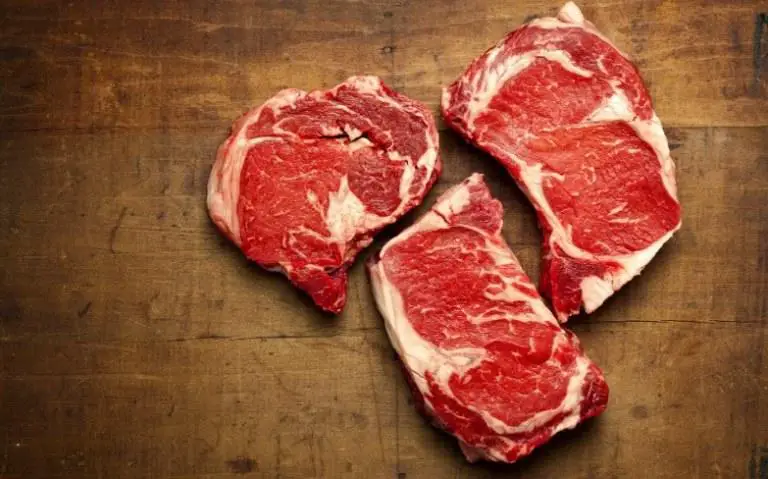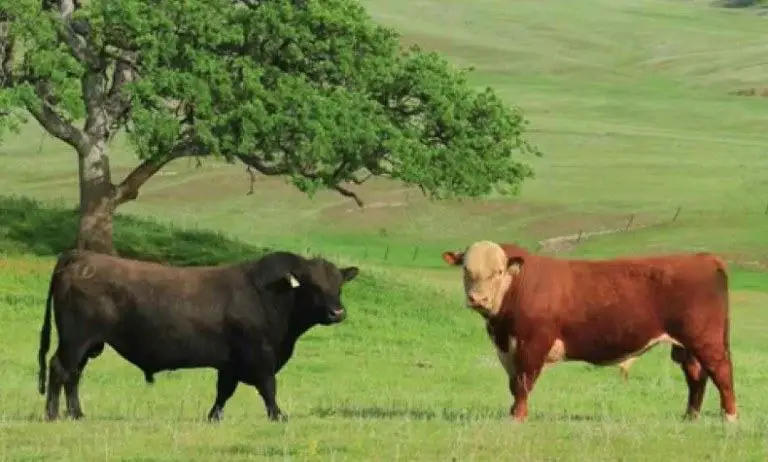No products in the cart.
Cow
Similarities & Differences Between Hereford vs Angus Cattle
A beef cut may be the favourite dish in every meal of eaters. Whether you are a professional butcher or a gourmet, Hereford or Angus cows are famous in the industry because of their quality and tasty meat. However, there are specific similarities and differences between Hereford vs Angus cattle that many may not know.
*This post may have affiliate links, which means I may receive commissions if you choose to purchase through links I provide (at no extra cost to you). As an Amazon Associate I earn from qualifying purchases. Please read my disclaimer for additional details.
Similarities between Hereford vs Angus
If you are a fan of beefsteak, Angus and Hereford’s meat are the two types that you should ever try in your life. Those two breeds of cattle are popularly used in the beef industry all over the world. They do show some similarities and are preferred by different market segments.
One more interesting fact is that Angus and Hereford can marble easier than any other breeds, and they can marble on grass alone without any corn-feeding.
Regarding care-giving, Angus and Hereford are both thought to be easy keeping and produce calves that are similar in size and weight.
Are you a Cow Lover? Check this collection of Bedding Sets for Cow lovers here!
Differences between Hereford vs Angus
1. Origin
The Hereford was originally from Herefordshire in south-west England and is one of the earliest British cattle types to have been improved. In the beginning, the cattle were used for ploughing for 6 or 7 years before getting fattened for market.
Meanwhile, the Angus cattle originated in Scotland from groups of closely related cattle breeds native to the shires of Aberdeen, Kincardine and Angus. That’s why sometimes it’s called Aberdeen Angus.
2. Distribution
The Hereford have been exported to continents, and there are more than 5 million purebred cattle in more than 50 countries in the world.
The first export recorded was from the United Kingdom in 1817 to Kentucky, then spread over the US and Canada, through Mexico, to countries of South America. Nowadays, thanks to their strong instinct from a cool and moist climate, we can find the Hereford cattle on nearly every continent, from Europe and Scandinavia to South African countries.
Aberdeen Angus cattle have also been commonly recorded in Europe, Australasia, Southern Africa, North and South America. The cattle became well-known throughout the British Isles in the middle of the 20th century. It was first introduced to Tasmania, Australia in the 1820s, and then to the southern mainland in 1840.
After that, the bulls were brought to Kansas, the US for the crossbreeding purpose, however, the Angus was proved to be quality enough. Therefore, many more of both sexes were imported to the US. During the period from 1876 to 1879, the import of this sort went on in Canada and then to Argentina.
3. Health
Eye cancer in the Hereford

Eye cancer commonly occurs in the Hereford. The disease can occur on the eyeball, eyelid or third eyelid. All the cases of eye cancers originated from precursor lesions, but less than half of these lesions cause cancer.
The cause of eye cancer can be:
- The unpigmented skin around the eyes: The Hereford born with this feature are more susceptible to eye cancer as cancer usually starts in this area, and then spreads to other areas.
- Increased ultraviolet (UV) radiation is also suggested to predispose the Hereford to cancer eye. It’s the reason why the rate of eye cancer is higher in those countries where the cattle are more exposed to continued bright sunlight.
A genetic disorder in the Angus

The most common problem found in the Angus is the genetic disorder – resulting in four recessive defects of calves worldwide. This disease can only occur when both parents carry the defective gene.
The four recessive defects in the Black Angus are:
- Arthrogryposis multiplex (AM), also known as the curly calf, lowers the mobility of joints neuropathic.
- Hydrocephalus (NH), sometimes known as water head, causes an enlarged malformed skull.
- Contractural arachnodactyly (CA), referred to by the name of “fawn calf syndrome”, reduces mobility in the hips.
- Dwarfism affects the size of calves.
Read More: Is a Swan and a Goose the Same Thing? Learn what makes these two waterfowl different from one another!
4. Body traits
There are obvious differences between the Hereford and the Angus that enable people to distinguish one type from the other.
Colour
The modern Hereford is in two colours: dark red to red-yellow, with the face, crest, dewlap, switch and legs below the hocks in white. On the other hand, the Angus are solid black in colour with just a little white on the underline, behind the navel scar.
Horn
The Hereford have small thick horns curved downwards along the sides of their heads. There’s also a new type of Hereford, called Polled Hereford, without any horns in North America and UK. In contrast, the Angus are naturally polled, which means they were born without horns.
Hereford vs Angus size
Mature males of modern Hereford may be 1,800 lbs. heavy and 152 cm high, while mature females may weigh around 1,200 lbs and reach 140 cm in height. An interesting fact is that the Herefords of the 1700s and early 1800s in England were much larger than today. Many could weigh more than 3,000 lbs.
Regarding the Angus, the bulls may weigh up to 1,870 lbs., and the cows may be up to 1,210 lbs. heavy. The size of Angus is a little smaller with the height of Angus bulls and cows at 135 cm and 125 cm respectively.
Maturity
Hereford bulls normally reach puberty when they are 9 or 10 months old. However, some farmers thought that it’s better to wait until bulls are 2 years old as their fertility is increased. For the female Hereford, they can get mated at 15 months to give birth at 2 years old, but good care needs to be given.
The Angus is known to typically mature earlier than other breeds. The male Angus reaches puberty between 9 and 10 months old, however, the same advice is given that farmers should wait until the bulls are about 15 to 18 months old for breeding purposes.
In terms of Angus cows, they can give their first calf at 2 years old. However, some farmers have to wait another year if the cows need more time to be mature enough. That’s the reason why the good moment for breeding is also decided by the level of care given by farmers.
5. Price
On average, the price between the two kinds is not much different as both types produce very quality meat. According to Schatzker (2006) in Slate e-magazine, not the beef type but the way the beef is processed leads to differences in the price.
Besides, the Hereford vs Angus price varies depending on the region and the preference of buyers.
6. Hereford vs Angus meat quality
Hereford meat

Hereford is well-built cattle with large forequarters, deep brisket, broad head, and stocky legs. In addition, they are said to be fast-growing animals with good quality and tasty meat.
Buyers in love with Hereford crave its succulence and tenderness which elevates the beef to a different level. Hereford beef is also loved because of the natural marbling that enhances tenderness, flavour and succulence.
Angus meat

A key factor that contributes to the popularity of this beef is the natural marbling of the fat through the beef, ensuring a wonderful flavour maintained during the cooking process. It is said that the Angus marble better, however, the Hereford do better on the shear test for tenderness.
Angus does have an advantage as the American Angus Association created the “Certified Angus Beef” (CAB) standard in 1978 with the aim of making everyone believe that “Black is Better”. Since then, the beef was then marketed to Australia, Japan and the UK to adopt it into the mainstream.
Conclusion
All in all, Hereford or Angus beef has its own taste of meat, and is sure to bring the different flavours because of the origin, the marbling texture and how somebody cooks it, but it’s somehow interesting to have a better understanding of Hereford vs Angus. This may let you make an easier decision on choosing the beef for your meal at home or a restaurant opening.

